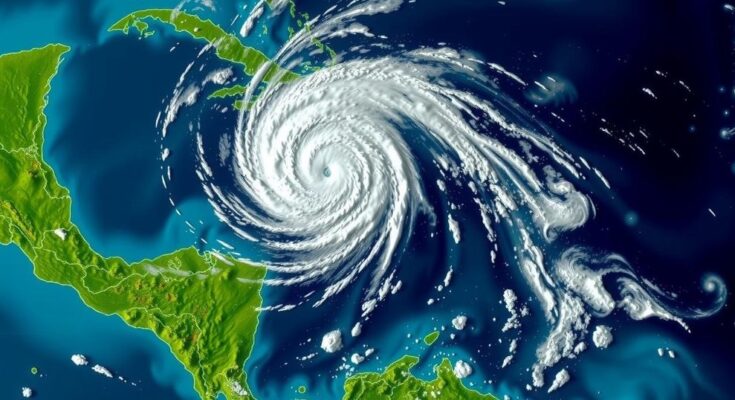Tropical Storm Sara has left four dead and thousands affected across Central America, primarily in Honduras and Nicaragua, causing significant flooding and property damage. The highest number of casualties occurred in Honduras, where a child was among the fatalities. Emergency services reported widespread destruction, including homes and infrastructure. Following its impact, Sara was downgraded to a tropical depression after passing Belize, marking the 18th named storm of the Atlantic season, which is expected to conclude by month-end.
Tropical Storm Sara has caused significant devastation in Central America, particularly in Honduras and Nicaragua, leaving at least four individuals deceased. The storm hit Honduras the hardest, resulting in two fatalities, including a tragic incident where a three-year-old child was swept away by a river. Approximately 123,273 individuals in Honduras have been impacted, with over 200 homes destroyed and 3,200 suffering damage. Emergency services reported that nine bridges were washed away, and landslides have disrupted roads, with substantial losses to farm crops as well. In Nicaragua, around 5,000 people experienced flooding in 1,800 homes due to the overflow of 25 rivers. The storm follows heavy rains that had already resulted in at least six deaths and four persons missing in Costa Rica, where landslides became prevalent. After traversing through Belize, Tropical Storm Sara has now weakened to a tropical depression in southern Mexico. As the 18th named storm of the Atlantic hurricane season, forecasters anticipate no further storm formation in the upcoming week, signaling an approaching end to the season’s activity.
The Atlantic hurricane season typically runs from June 1 to November 30, featuring an average of 14 named storms, of which seven may develop into hurricanes and three could escalate to major hurricanes. The region is particularly vulnerable to tropical storms, which can lead to severe flooding and destruction upon landfall. Tropical Storm Sara is noted as the third named storm within November, following significant rain in the weeks prior that contributed to fatalities and infrastructure damage in surrounding countries. This implies a pattern of increased storm activity, of which the National Oceanic and Atmospheric Administration (NOAA) has predicted the potential for more intense storms in the forthcoming 2024 season, underscoring concerns regarding climate changes that may contribute to the severity and frequency of such weather phenomena.
In summary, Tropical Storm Sara has wreaked havoc across Honduras and Nicaragua, resulting in loss of life, extensive property damage, and widespread flooding. The storm exacerbated pre-existing conditions from prior heavy rains, which already affected neighboring Central America. The downgrading of Sara to a tropical depression marks a temporary relief for the region, though the anticipation of continued storm activity highlights the ongoing environmental challenges faced in Central America.
Original Source: www.aa.com.tr




